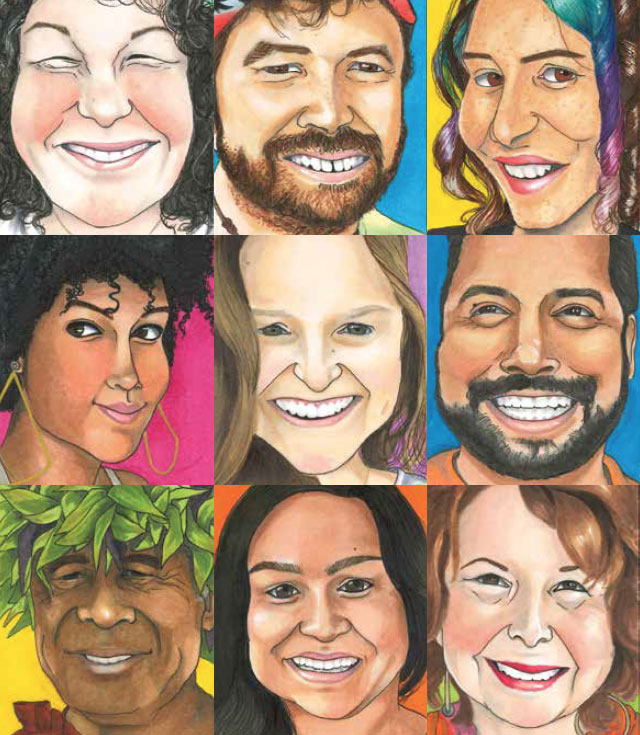STORY BY PAUL WOOD | ILLUSTRATIONS BY JENNIFER KRAMER

In the County of Maui, who has the most to gain from being counted in the 2020 US Census? Ironically, it’s the people who might feel that they don’t count. So says Jeanette Pacheco, the Census Bureau’s media specialist for the nation’s far-west regions, which include the Pacific. “There’s a lot at stake for everyone,” Pacheco says, “but especially for communities who really need vital programs.” These needs include allocation of funds for local schools, Head Start programs, SNAP (supplemental nutrition for the poor and hungry), Medicaid coverage, not to mention ambulances and other emergency services. Says Pacheco, anyone living on Maui who might want such services ought to rush to be counted. She includes residents who might worry about their immigration status, recent arrivals living twelve in a room, and homeless people sleeping on cardboard on the shore. Census workers will come walking around knocking on doors, dorms, nursing homes, and tent-flaps in order to make “a fair and accurate count. So that no one will be denied a voice.”
Pacheco says that the Census Bureau is also required by law to protect all information. “Census employees never ask for a social security number,” she says. “The census never reports to any government agencies, not the CIA, the FBI, ICE, or HUD.” In fact, she says, she and all other census employees take an oath to protect information sources. The U.S. Constitution requires a census every ten years to determine how many people live in the country. The task seems simple, but of course it’s not. In 1790 the combined population of the largest cities in the United States would barely have filled one of our contemporary football stadiums. Today, the U.S. population is well north of 310 million, says Pacheco.
The first known census taken in the Hawaiian Islands happened in 1832 the population that year was figured to be 130,313. Subsequent censuses in the Kingdom were conducted in 1836, 1850, 1853 and 1860 and then every six years after 1866. After the United States claimed Hawai‘i as a territory, the first Territorial Census took place in 1900; the population that year was figured to be 154,001. The Territory was divided into counties in 1905 and the 1910 census provided a count of the County of Maui (including Moloka‘i): 30,456 (out of a Territory-wide total of 191,909). By 2010, the last year a census was taken, Maui County’s population stood at 154,834 and all of the Islands at 1,360,301.
While most counting is now done through the mail or by phone, the 2020 census is the first to also operate on the Internet. The online site is fluent in twelve languages and offers guides in fifty-nine languages. Census workers will only knock on your door if you haven’t self-responded. The law requires the Census Bureau to deliver apportionment counts to the President and Congress by December 2020 and then to send redistricting counts to the states by March 31, 2021.
This year a significant push is being made to encourage all Hawaiians and other native Pacific Islanders—the “HN/ PI” populations—to participate in the census. A new online music video— search “2020 Census This Is Me”— melds great performances by Pacific Islanders who are seen performing not only in Hawai‘i but also in such Polynesian diaspora venues as Telegraph Hill, Venice Beach, and Brooklyn. A diverse collection of artists—including Kalenakū, Raiatea Helm, and Amy Hānaiali‘i Gilliom—encourages all Islanders in the United States to raise their voices to affirm their presence.





